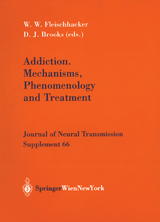
Terrigenous Clastic Depositional Systems
Springer-Verlag New York Inc.
978-0-387-90827-4 (ISBN)
- Titel erscheint in neuer Auflage
- Artikel merken
1 The Fuel-Mineral Resource Base.- 2 Approaches to Genetic Stratigraphic Analysis.- Depositional Architecture.- Quantitative Facies Mapping.- Wire-Line Logs.- Seismic Stratigraphie Analysis.- Recognition of Depositional Systems—An Example.- Facies Models—Reference Points.- Integrated Genetic Stratigraphy.- 3 Alluvial-Fan Systems.- Processes Acting on Alluvial Fans.- Wet (Stream-Dominated) Alluvial Fans.- Arid-Region Fans.- Fan Deltas.- Basin-Fill Geometry.- 4 Fluvial Systems.- Depositional Processes.- Fluvial Facies.- The Spectrum of Fluvial Depositional Systems.- Basin Analysis and Fluvial-System Evolution.- Ancient Fluvial Systems.- 5 Delta Systems.- Delta Process Framework.- Process Classification of Delta Systems.- Fluvial-Dominated Deltas.- Wave-Dominated Deltas.- Tide-Dominated Deltas.- Recognition and Interpretation of Ancient Delta Systems.- 6 Clastic Shore-Zone Systems.- Depositional Processes.- Shore-Zone Facies.- Shore-Zone Systems in Basin Analysis.- Shore-Zone Systems Through Geologic Time.- 7 Terrigenous Shelf Systems.- Processes on Shelves.- Shelf Facies.- The Spectrum of Shelf Systems.- 8 Terrigenous Slope and Basin Systems.- Slope Processes.- Gravity Mass Transport.- Deep-Ocean Tidal Currents.- Pelagic Sedimentation.- Major Types of Terrigenous Slope and Basin Systems.- Slope-Wedge Stratigraphy.- 9 Lacustrine Systems.- Lacustrine Processes.- Lacustrine Facies.- Geometry, Distinguishing Characteristics, and Evolutionary Patterns in Lake Systems.- 10 Eolian Systems.- Texture.- Eolian Bedforms and Structures.- Interdune Facies.- Scale and Associations of Eolian Systems.- 11 Depositional Systems and Basin Hydrology.- Fundamentals of Ground-Water Flow.- Properties of the Aquifer Matrix.- Basin Geohydrology.- The Meteoric Flow Regime.- Compactional and Thermobaric Systems.- Hydrology of Depositional Systems.- Conclusion: Paleohydrology.- 12 Coal.- Coal-Forming Environments.- Coalification.- Coal Type.- Tectonic Setting of Coal Basins.- Coal-Bearing Cycles and Paleoenvironments.- General Factors Affecting Coal Seam Distribution.- Coals in Relation to Delta Type.- Coal-Bearing Deltaic Facies.- Fluvial Coals.- Fluvio-Deltaic Progradational Succession.- Alluvial-Fan Coals.- Paleoenvironmental Control Over Mineral Matter in Coal.- Paleoenvironmental Control Over Roof Conditions in Mines.- Geometry and Evolution of Coal Basins.- Coal Resource Estimates.- 13 Sedimentary Uranium.- The Uranium Cycle and Its Products.- Syngenetic Quartz-Pebble Conglomerate Deposits.- Syndiagenetic Uraniferous Lacustrine and Swamp Deposits.- Epigenetic Sandstone Uranium Deposits.- Applications to Resource Evaluation, Exploration, and Development.- 14 Petroleum.- Distribution of Petroleum in Time and Space.- Depositional Systems and Hydrocarbon Exploration and Production.- Occurrence of Petroleum in Depositional Systems.- Example: Intracratonic Basic Depositional Systems and Hydrocarbon Occurrence.- Example: Frio Depositional Systems, Northern Gulf Coast Basin.- References.
| Verlagsort | New York, NY |
|---|---|
| Sprache | englisch |
| Themenwelt | Naturwissenschaften ► Biologie ► Ökologie / Naturschutz |
| Naturwissenschaften ► Geowissenschaften ► Geologie | |
| Naturwissenschaften ► Geowissenschaften ► Mineralogie / Paläontologie | |
| Naturwissenschaften ► Physik / Astronomie | |
| ISBN-10 | 0-387-90827-7 / 0387908277 |
| ISBN-13 | 978-0-387-90827-4 / 9780387908274 |
| Zustand | Neuware |
| Haben Sie eine Frage zum Produkt? |
aus dem Bereich



